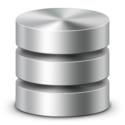Backup a CDB/PDB
- To make a database backup you need the SYSBACKUP or SYSDBA privilege.
- You can backup the CDB and all the PDBs independantly, all together, or by specifying a list.
- You can backup a PDB by connecting directly to it and use:
- RMAN> BACKUP DATABASE:
- You can backup a PDB by connecting to the CDB and use:
- RMAN> BACKUP PLUGGABLE DATABASE MY_PDB;
- To backup only the root (CDB$ROOT) connect to the CDB and use:
- RMAN> BACKUP DATABASE ROOT;
- You can backup everything by connecting to the CDB and use:
- RMAN> BACKUP DATABASE;
- You can backup only some PDBs by using:
- RMAN > BACKUP PLUGGABLE DATABASE PDB1, PDB2, PDB3;
Backup tablespaces and datafiles in CDBs/PDBs
- You can backup tablespaces from several PDBs at the same time when connected to the root using:
- RMAN> BACKUP TABLESPACE PDB1:USERS, PDB2:TOOLS, PDB3:SYSTEM;
- You can also backup tablespaces using the standard command when you connect directly to the PDB:
- RMAN> BACKUP TABLESPACE SYSTEM;
- To backup datafiles for a PDB you can :
- Connect to the root and use : BACKUP DATAFILE 12,13,14;
- Connect to the PDB and use : BACKUP DATAFILE 12,13,14;
Continue reading OCP 12C – Backup, Recovery and Flashback for a CDB/PDB

